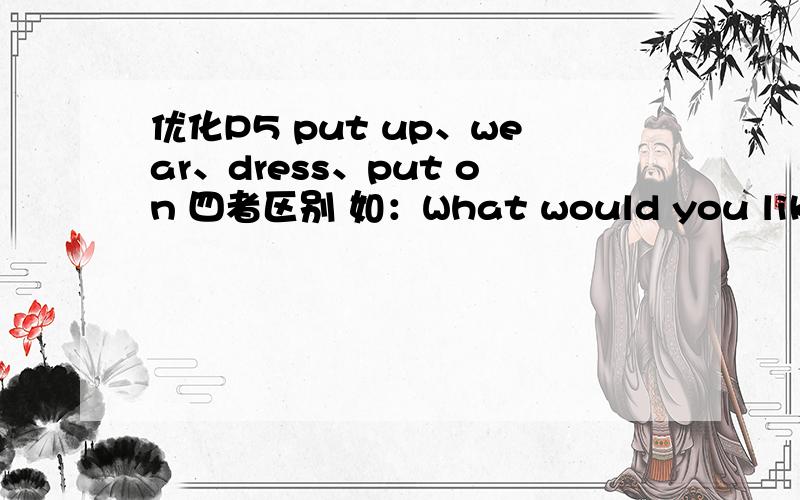优化P5 put up、wear、dress、put on 四者区别 如:What would you like to ( )at the party?选填谁
来源:学生作业帮助网 编辑:作业帮 时间:2024/11/17 03:30:07

优化P5 put up、wear、dress、put on 四者区别 如:What would you like to ( )at the party?选填谁
优化P5 put up、wear、dress、put on 四者区别 如:What would you like to ( )at the party?选填谁
优化P5 put up、wear、dress、put on 四者区别 如:What would you like to ( )at the party?选填谁
我觉得选dress,put up 很少有"穿(衣服)"的意思吧 put on 强调动作 wear强调状态 dress的用法比较广泛,另有打扮的意思
wear“穿着”,“带着”,可用于穿衣服、穿鞋、戴 帽子、戴手套、佩带首饰等,强调穿着的状态.例如:Tom always wears black shoes.汤姆总穿黑鞋子.The girl wearing a red skirt is my sister.穿红裙子的女孩是我的妹妹.
put on是“穿上”,“戴上”的意思,可用于穿衣服、穿鞋、戴帽等,着重于穿戴的动作.例如:
Put on your coat before you go out.出去之前穿上大衣.
He put on his hat and went out of the room.他戴上帽子然后走出了房间.
dress可作及物动词和不及物动词,有“穿着”,“打扮”的意思.作“穿着”解时,只用于穿衣服,作及物动词时它的宾语是人,不是衣服,即dress sb.(给某人穿衣服).例如:She always dresses well.她总是穿着讲究.
Mary is dressing her child.玛丽在给她的孩子穿衣服.